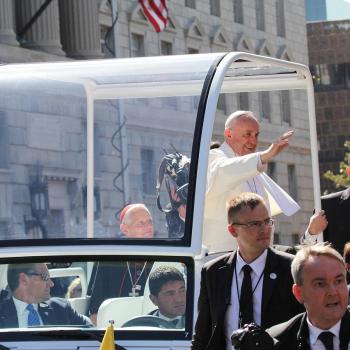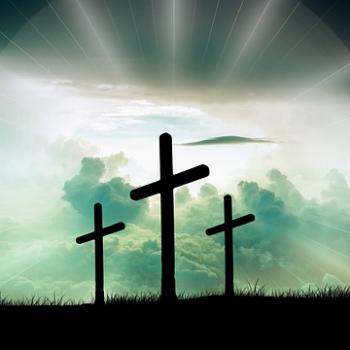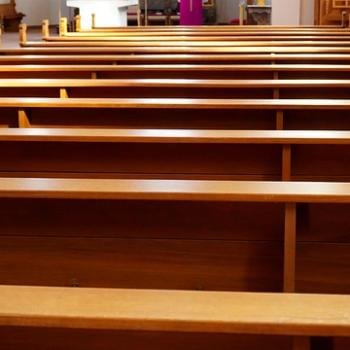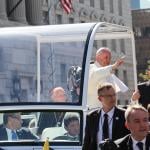JOSHUA IN ILLINOIS ASKS:
(Regarding this 1988 Forbes magazine quote from management expert Peter Drucker): “The pastoral megachurches that have been growing so very fast in the U.S. since 1980… are surely the most important phenomenon in American society in the last 30 years.” Do you agree?
THE GUY ANSWERS:
No, not if Drucker really thought they were the single most important U.S. phenomenon since 1958. The Guy would immediately note, for instance, the personal and societal gains in African-American equality, the abortion and gay movements, or increased unwed motherhood with resulting family disruption — emotional, financial, educational, vocational, and moral. Looking only at U.S. religion, The Guy would propose as equally significant the immigration-driven expansion of U.S. Islam or the steady shrinkage of left-leaning “mainline” Protestantism during those decades. Religion Q and A readers can doubtless post others.
However, Drucker is correct to stress that Protestant megachurches (hereafter called “megas”) are among the most important new phenomena. Catholic parish memberships are often large, but this is revolutionary for U.S. Protestantism.
Some megas have declined and analysts wonder whether others will lose dynamism as their founders retire. But over-all, megas are prospering, according to experts at the Hartford Institute for Religion Research and the Leadership Network, which have jointly tracked such churches for years. Their findings as follows define a Protestant mega at average weekend attendance of 2,000 and up, using an 1,800 baseline due to inevitable ups and downs. That covers 3,207 U.S. congregations. Of these, nearly a third report attendance of 4,000 and up and 6 percent with 10,000 or more.
A fourth of the megas have been founded since Drucker said that. Between 2005 and 2010, average weekend attendance in the category grew from 2,604 to 3,597, nearly 8 percent a year. Participation doubled during that half-decade for 28 percent of megas. The megas account for an estimated one-tenth of nationwide weekly Protestant attendance, nearly 6 million people. (Of course the other nine-tenths are important.) Two-fifths of adult participants joined in just the past five years. Bucking the trend of graying flocks elsewhere, 70 percent of attenders are under age 50.
Money: Roughly two-thirds of megas have seen an increase in offerings since the start of 2012. About half the typical budget goes for salaries and personnel benefits, about the same as for smaller churches. But with numerous programs to operate, megas have mega staffs, an average of 11 full-time and 4 part-time clergy plus 33 full-time and 27 part-time lay employees. Three-fourths of megas planned to hire new staff members in the coming year.
Hardly any megas consider themselves “liberal.” The dominant identification is “evangelical” (71 percent of megas), followed by “pentecostal” (8 percent), “charismatic” (5 percent), “seeker” (5 percent), “missional” (4 percent), “moderate” (4 percent) and “fundamentalist” (1 percent). Underscoring their conservatism, three-fourths say they emphasize, for example, opposition to premarital sex. A tenth of megas have African-American majorities vs. only 2 percent that are predominantly Asian and 1 percent for Hispanics. By affiliation, 40 percent are “non-denominational” independents while 23 percent are either Southern Baptist or another type of Baptist.
The majority of megas report shortages in facilities and space. Nearly half hold services in more than one location and another 20 percent are considering such expansion. Besides multiple Sunday morning services, 48 percent have one or more Saturday night services and 41 percent have one or more Sunday night services. Though megas are closely associated with services featuring bands performing “contemporary Christian music,” 43 percent have choirs and 28 percent use an organ. Small groups are central to strategy for 82 percent of megas.
Virtually all megas give people cash assistance and offer financial counseling, 80 percent have feeding programs, and three-fourths engage in other community services. Contrary to the political stereotype, only 36 percent emphasize “voter education” or registration.
Megas are very thin on the ground in New England, New York, New Jersey, and Pennsylvania, more prominent in the Midwest, and strong in the South and West. Four states lack a single megachurch: Delaware, Maine, Rhode Island, and Vermont.]
Text of an HIRR – LN megachurch report: http://hirr.hartsem.edu/megachurch/megachurch-2011-summary-report.htm












